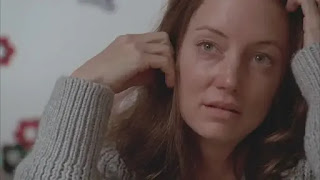.png)
In the past decade, the isekai genre has risen to prominence in anime and manga, capturing the imaginations of millions with stories that transport ordinary individuals into fantastical worlds. From Sword Art Online to Re:Zero, these narratives are often characterized by their blend of adventure, otherworldly settings, and personal growth as protagonists navigate their new environments. The first Isekai in manga was Warrior From Another World written in 1979. However, long before anime embraced the idea of otherworldly travel, Western literature laid the foundation for what we now recognize as the core elements of isekai. Classic works such as Alice in Wonderland, Peter Pan, The Chronicles of Narnia, and The Wizard of Oz are quintessential examples of this concept, predating the modern genre by decades, if not centuries.
Isekai is a Japanese term that literally means different world. In the context of storytelling, it refers to a genre where the protagonist is transported from their ordinary life into a fantastical realm. In most cases, this world is vastly different from our own, often involving magical creatures, advanced technology, or new societal rules that challenge the protagonist's perception of reality.
But, when we think about the core aspects of isekai—transportation to another world, the contrast between the real and the fantastical, and the protagonist’s journey through personal or moral development—we realize that this idea isn’t unique to Japan. Western literature has long explored this very concept, often in stories that are now considered classics.
Alice in Wonderland: The Pioneer of World-Hopping
Lewis Carroll's Alice's Adventures in Wonderland (1865) is one of the earliest and most enduring examples of isekai in Western literature. Alice, an ordinary girl, tumbles down a rabbit hole and into the bizarre world of Wonderland. From the talking animals to the illogical laws of nature, Alice must navigate this curious world while trying to understand the strange creatures she encounters.

Wonderland is, in many ways, the quintessential other world of an isekai story. It is bizarre, disorienting, and operates under rules that are completely alien to Alice. Yet, like many isekai protagonists, Alice grows through her experiences in this new realm. While she begins her journey bewildered by Wonderland’s oddities, she gradually learns to assert herself, starting off not knowing which direction to go to ultimately standing up to the Queen of Hearts before waking up in the real world. Her journey of self-discovery through the lens of a fantastical world makes Alice in Wonderland a clear precursor to the modern isekai genre.
Peter Pan: The Fantasy World of Neverland
J.M. Barrie’s Peter Pan (1904) takes the concept of travel to another world in a different direction. Wendy, John, and Michael Darling are whisked away from their home in London by Peter Pan and flown to Neverland—a magical island inhabited by fairies, pirates, mermaids, and Lost Boys. Like an isekai, the real world and Neverland are starkly contrasted. In Neverland, time behaves differently, magical creatures exist, and the children are free from the restrictions of the adult world.

Neverland embodies the wish-fulfillment aspect that is so often central to isekai stories. In Neverland, children can fly, fight pirates, and live out heroic adventures. Yet, Barrie’s tale also explores the dangers of escapism, a theme that many modern isekai series touch upon. Wendy and her brothers eventually choose to return to the real world, having learned that while Neverland offers excitement and freedom, it is not where they truly belong. This idea of experiencing growth through an adventure in another world is a defining characteristic of isekai storytelling.
The Chronicles of Narnia: The Doorway to Another World
C.S. Lewis’s The Chronicles of Narnia series (1950-1956), particularly The Lion, the Witch, and the Wardrobe, is perhaps the most overt example of an isekai in classic Western literature. Four siblings—Peter, Susan, Edmund, and Lucy—stumble through the wardrobe into the magical land of Narnia, where they are destined to play key roles in the battle between good and evil.
Narnia exemplifies many of the tropes seen in contemporary isekai: an ordinary group of people transported to a new world, where they discover latent powers or roles of great importance. The Pevensie children arrive as outsiders, but they soon find that they are integral to the world they’ve entered. They grow into leaders, learn valuable moral lessons, and by the end of their journey, they are different people from when they first entered the wardrobe.
Like many modern isekai stories, Narnia plays on the tension between the fantastical world and the real one. The Pevensies eventually return to their own world, but they are forever changed by their experiences in Narnia, just as protagonists in modern isekai are transformed by their adventures.
The Wizard of Oz: The Classic American Isekai
L. Frank Baum’s The Wonderful Wizard of Oz (1900) is another cornerstone of Western isekai literature. Dorothy Gale, swept away by a tornado from her home in Kansas, finds herself in the colorful, magical land of Oz. Much like Alice in Wonderland, Dorothy must navigate this new world and its eccentric inhabitants—including a scarecrow in need of a brain, a tin man seeking a heart, and a lion in search of courage—on her way to return home.
Oz is as strange and wondrous as Wonderland, but Baum’s story has a more defined hero’s journey. Dorothy undergoes growth and self-realization through her travels in Oz, learning that the power to achieve her goals lies within her all along. The theme of personal discovery through an adventure in a new world is a hallmark of both The Wizard of Oz and the isekai genre.
Gulliver's Travels: Another Classic Example
Jonathan Swift's Gulliver’s Travels (1726) is another early example of isekai before isekai was a genre. The protagonist, Lemuel Gulliver, is repeatedly transported to various strange lands, including Lilliput, where the inhabitants are tiny, and Brobdingnag, where the inhabitants are giants. Each land has its own unique rules and customs, often reflecting satirical commentary on the political and social conditions of Swift's time.
While Gulliver's Travels is more of a satirical work than an adventure tale, it nonetheless shares key isekai elements. Gulliver’s experiences in these fantastical realms force him to reflect on human nature, societal norms, and his own place in the world, much like modern isekai protagonists are changed by their journeys through other worlds.
The Legacy of Classic Isekai
The isekai genre, as we know it today, may be synonymous with anime and manga, but its roots run deep in Western literature. Alice in Wonderland, Peter Pan, The Chronicles of Narnia, The Wizard of Oz, and Gulliver’s Travels all explore the fundamental theme of journeying to another world and growing through that experience. These stories set the stage for the modern isekai genre by blending escapism, adventure, and personal transformation in ways that continue to resonate with readers today.
In many ways, these classic works prove that the allure of otherworldly adventures transcends cultures and time periods. While isekai has evolved into a distinctly modern genre, its core themes remain as timeless as they were in the days of Alice, Dorothy, and the Pevensie children.














































